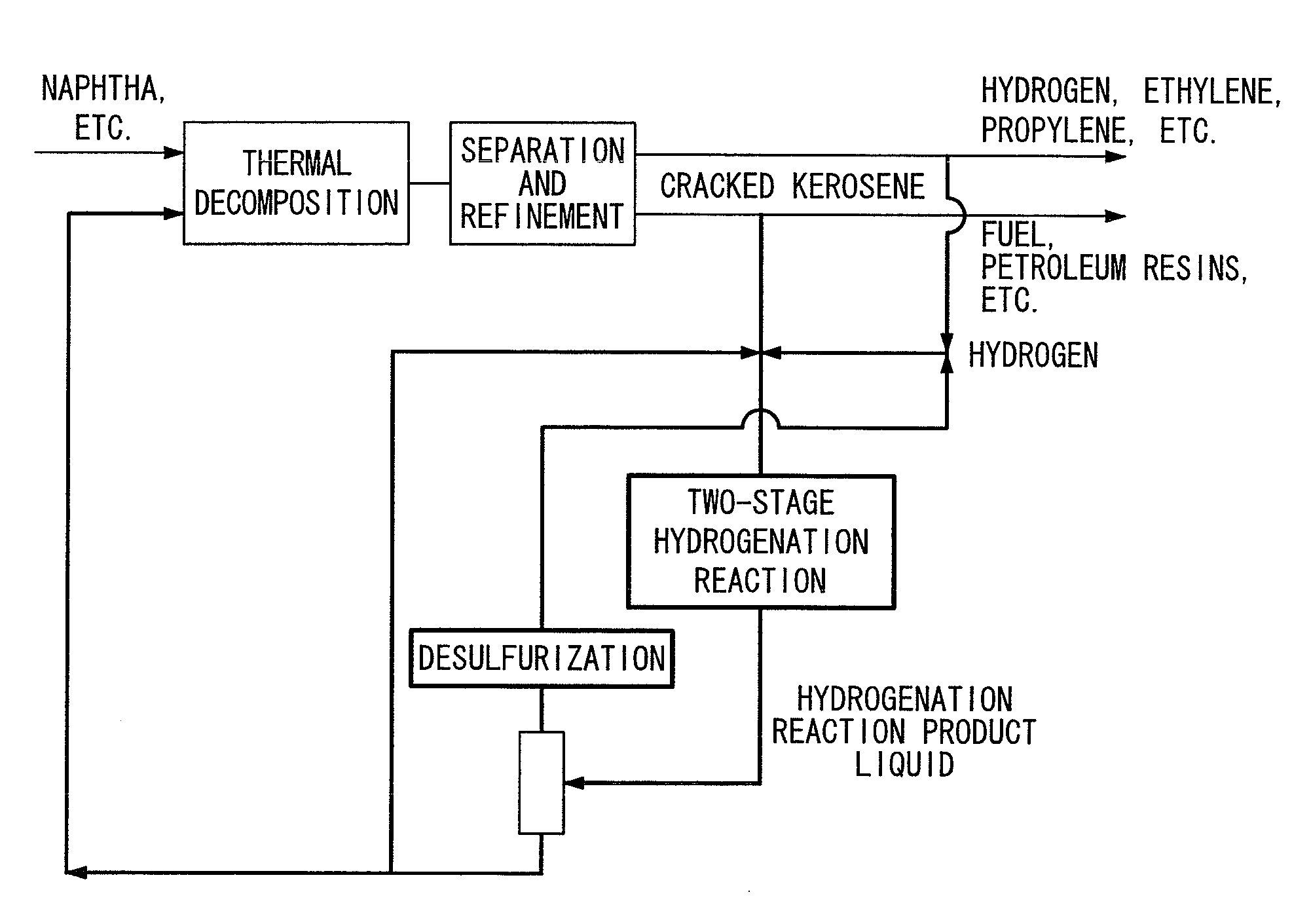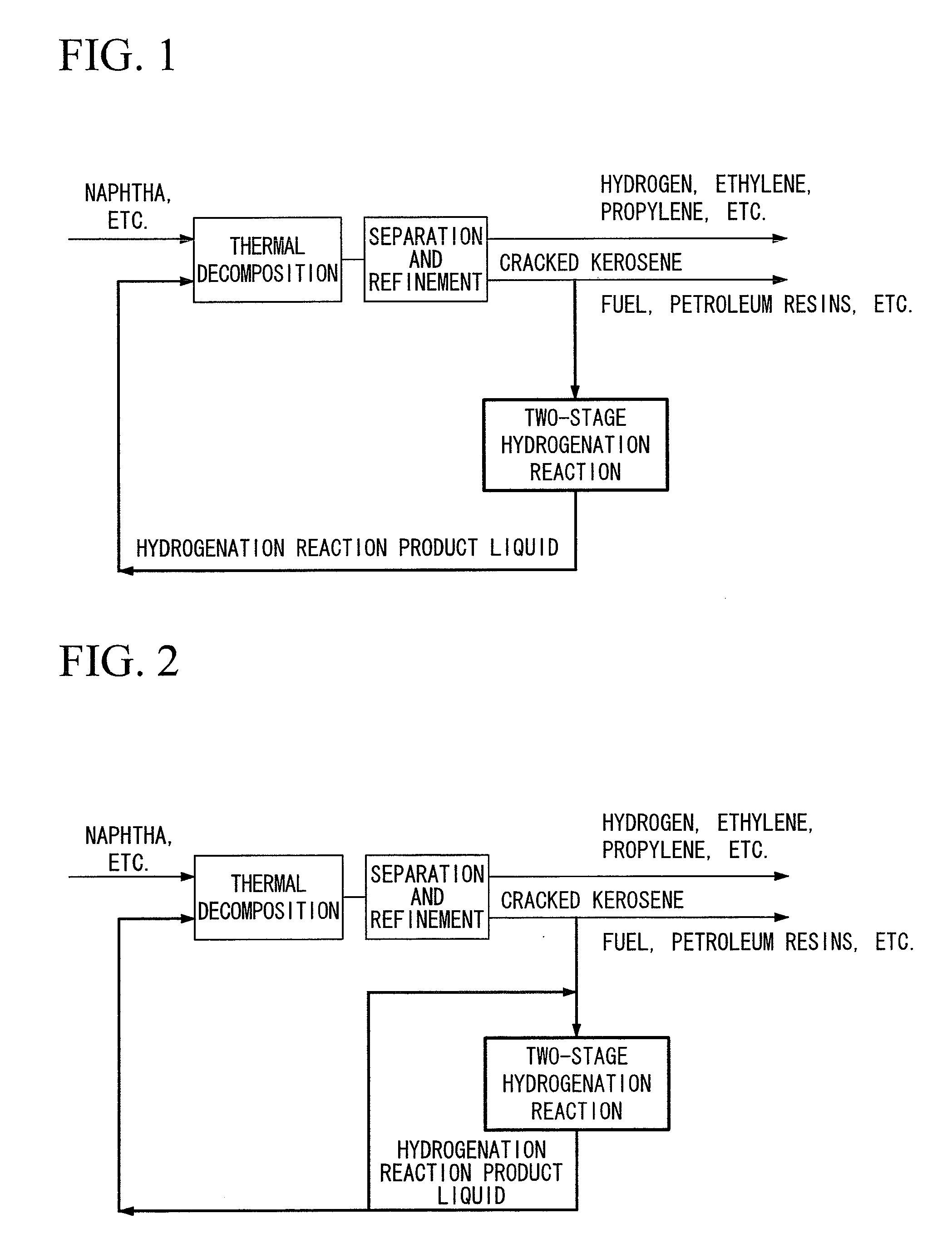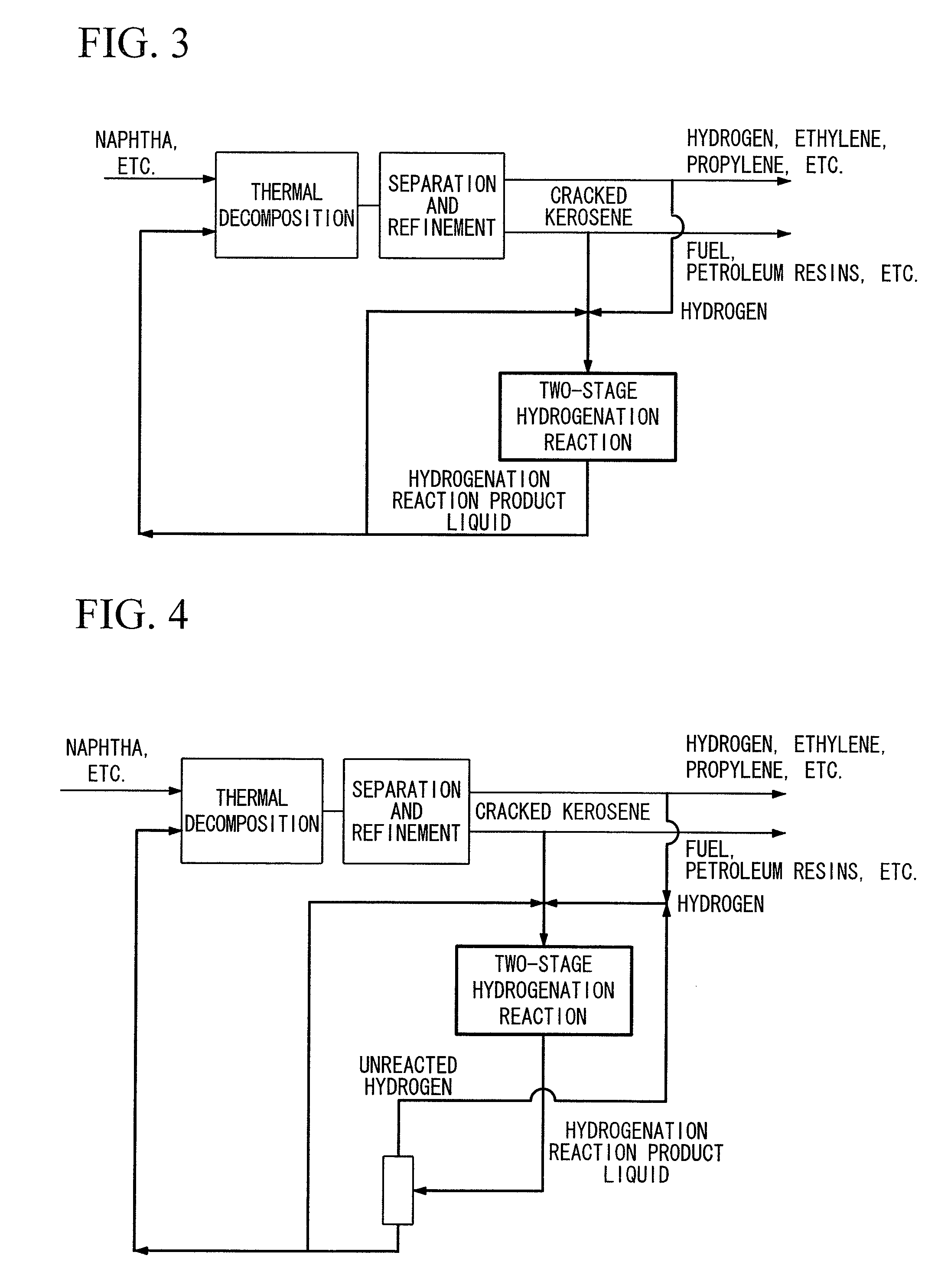Hydrogenation method and petrochemical process
- Summary
- Abstract
- Description
- Claims
- Application Information
AI Technical Summary
Benefits of technology
Problems solved by technology
Method used
Image
Examples
example 1
[0157]Cracked kerosene sampled with an ethylene plant and comprised of the following components was supplied to a hydrogenation reaction. The main properties of the supplied liquid are indicated below.
[0158]Initial boiling point: 101.5° C., endpoint: 208.5° C. (normal pressure)
[0159]Density: 0.92 g / L
[0160]Bromine number: 100 g / 100 g
[0161]Sulfur content: 120 ppm by weight
[0162]Composition of main components: vinyltoluene: 19.4% by weight, indene: 16.0% by weight, dicyclopentadiene: 7.0% by weight, trimethylbenzene: 5.5% by weight, styrene: 5.2% by weight, α-methylstyrene: 3.1% by weight, β-methylstyrene: 5.1% by weight, methylindene: 1.0% by weight, naphthalene: 2.7% by weight
[0163]Reaction conditions for (I) 1st stage hydrogenation reaction:
[0164]Hydrogen pressure: 5.0 MPa, reaction temperature: 90 to 110° C., raw material supply rate: 30 g / h, hydrogen flow rate: 72 NL / h, amount of catalyst: 20 g, spatial velocity (WHSV): 1.5 / h
[0165]Reaction conditions for (II)...
example 2
[0170]The reaction of Example 2 was carried out in the same manner as Example 1. However, a mixture of cracked kerosene and the reaction product liquid of reaction (II) at a ratio of 1:4 (weight ratio) was used for the raw material of reaction (I). The reaction product liquid of reaction (I) (condensed component) was used as is for the raw material of reaction (II). Namely, both reaction (I) and reaction (II) were carried out in the same manner as Example 1 with the exception of making the raw material supply rate 150 g / h (of which that for the reaction product liquid of reaction (II) in Example 1 used as a diluent was 120 g / h), and making the spatial velocity 7.5 / h. Furthermore, the 2nd stage reaction product liquid obtained in Example 1 was used for the diluent during initial operation (0 to 24 hours of operating time). The reaction product liquid generated in this Example 2 was used for the diluent thereafter.
[0171]The results obtained following the reaction...
PUM
 Login to View More
Login to View More Abstract
Description
Claims
Application Information
 Login to View More
Login to View More - R&D
- Intellectual Property
- Life Sciences
- Materials
- Tech Scout
- Unparalleled Data Quality
- Higher Quality Content
- 60% Fewer Hallucinations
Browse by: Latest US Patents, China's latest patents, Technical Efficacy Thesaurus, Application Domain, Technology Topic, Popular Technical Reports.
© 2025 PatSnap. All rights reserved.Legal|Privacy policy|Modern Slavery Act Transparency Statement|Sitemap|About US| Contact US: help@patsnap.com



